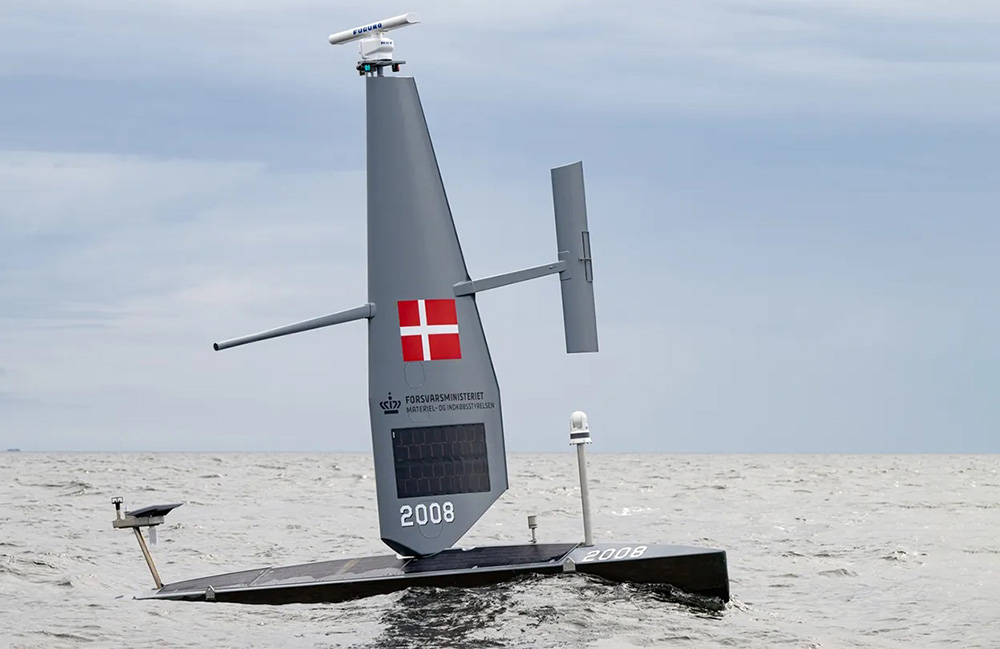
Saildrone established a European subsidiary in Denmark in April 2025. | Source: NATO Maritime Command
Saildrone Inc. yesterday announced that it has concluded its participation in NATO Task Force X’s multi-domain demonstration in the Baltic Sea. The maritime autonomy developer said this deployment showcases the capability, reliability, and international utility of its Saildrone Voyager uncrewed surface vehicles, or USVs.
“We are honored to have participated in the NATO Task Force X Baltic Initiative,” said Richard Jenkins, founder and CEO of Saildrone. “After eight years of operating Saildrone USVs in the Bering Sea, we are well placed to deal with the conditions in the Baltic Sea, which has very similar latitude, water depths, and sea conditions. Task Force X Baltic has been fantastic to work with, and we look forward to future missions with NATO partners.”
Alameda, Calif.-based Saildrone’s USVs use sophisticated sensors combined with proprietary AI algorithms. These provide a full picture of the maritime environment above and below the sea surface.
The Voyager USV earned the company a 2025 RBR50 Robotics Innovation Award for mapping previously unexplored areas of the Gulf of Maine.
USVs continue operating through harsh conditions
From June 16 to 27, four Saildrone Voyagers operated in both the Gulf of Finland and the western Baltic Sea. The company deployed the USVs from Køge, Denmark, to demonstrate a layered, autonomous force structure capable of responding to dynamic maritime scenarios in real time. It had opened its Danish office in April and raised $60 million in May toward European expansion.
Throughout the operation, Saildrone said its Voyagers maintained a 100% persistent presence on station, delivering 24/7 wide-area surveillance and real-time maritime domain awareness. The drones even continued operations during the recent passage of near-gale to gale-force winds and rough seas with waves over 2 m (6.5 ft.) through the area of operation.
The drones acted as part of NATO’s Task Force X Baltic initiative, led by NATO Allied Command Transformation (ACT), in coordination with NATO Maritime Command (MARCOM) and the Centre for Maritime Research and Experimentation (CMRE). The demonstration aimed to integrate uncrewed systems into active Allied maritime operations.
Saildrone claimed that it detected and tracked hundreds of vessels daily and that it successfully identified the exercise’s “red forces.” The company also said it identified real-world “dark targets” in the area, including Russian “shadow fleet” and military vessels.
Saildrone demonstrates ability to respond
The company also said it successfully paired its long-range radar and persistent surveillance capability with high-speed unmanned maritime assets. The Voyagers were able to detect contacts of interest at extended range, enabling rapid-response investigations by fast-moving uncrewed vessels.
The Baltic Sea demonstration was part of NATO’s Dynamic Messenger innovation pathway. Task Force X Baltic aims to advance NATO’s ability to rapidly integrate commercial-off-the-shelf autonomous systems. It does this by increasing scalability while preserving high-value crewed assets for critical missions.
Saildrone noted that it operates on a contractor-owned and operated model, providing “end-to-end” mission operations and data delivery as a service. This approach enables rapid deployment, scalability, and reduced burden on government or commercial partners, claimed the company.
Data is integrated into the customer’s common operating picture (COP) and is also available via the Saildrone Mission Portal. The company explained that its global pilot team worked closely with NATO Maritime Command to deliver responsive, dynamic high-volume tasking to meet the operational objectives of the exercise.
The post Saildrone completes NATO multi-domain demo in Baltic Sea appeared first on The Robot Report.

